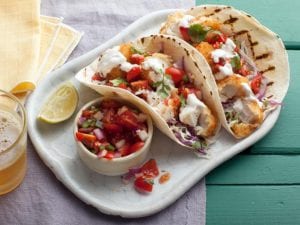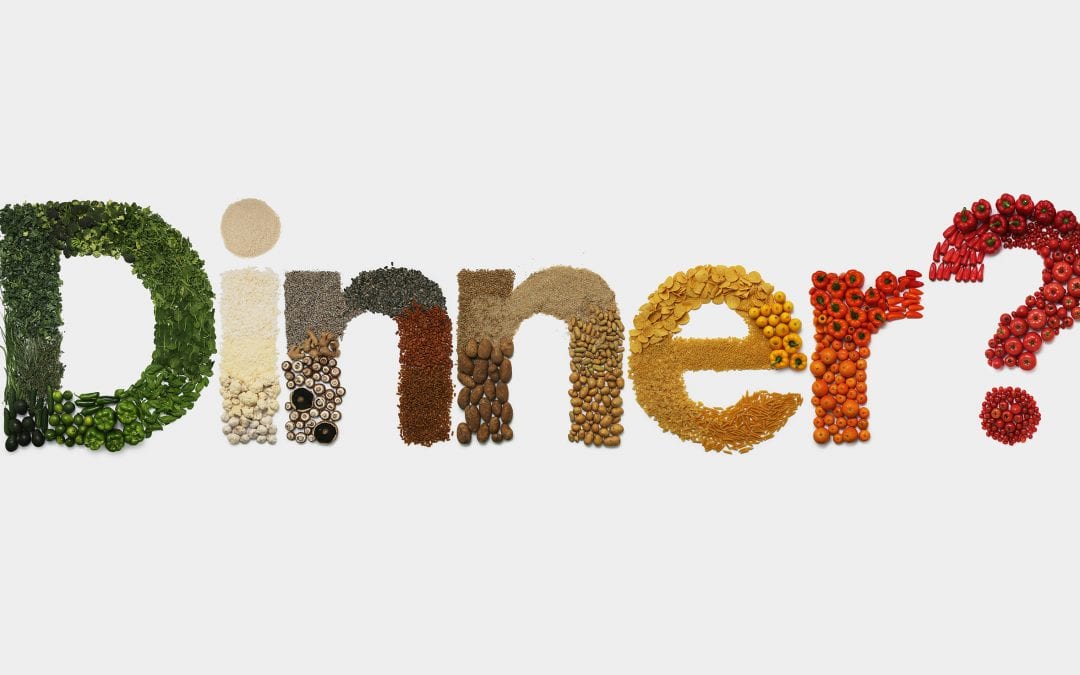That dreaded question – “what’s for dinner?” Whether your five-year-old asks you that at 4:30 in the afternoon or you’re pondering it as you make your weekly menu, the question of what to have for dinner can be stressful. I can attest that, some weeks, it takes me longer to create our menu than it does to derive the grocery-shopping list and actually do the shopping!
I can be a bit of an over-thinker, so perhaps my snail speed at creating a meal plan has to do with that. I have to remind myself that this isn’t calculus, it’s just dinner! I’m not working on differential equations and solving for f(x). I’m just putting food on the table for a week.
What is really helpful for me during busy seasons or times of transition is a dinner formula. It’s not calculus, I promise (Who remembers that??). Rather it’s an easy go-to way to plan out your weeks when you don’t have much time to stew on “what’s for dinner.” Assign a meal category to each night of the week and then plug in recipes from there. This can help to narrow down your recipe search time and lessen the *productive* hours you spend on Pinterest.
You can go about this a number of ways, but I’ll share two examples. The first is a Main Dish approach:
- Monday: Meatless
- Tuesday: Beef
- Wednesday: Chicken
- Thursday: Leftovers
- Friday: Fish
- Saturday: Out to eat
- Sunday: Pork
From here, you can plug in favorite recipes that feature the main dish and create a meal plan from there. Your meal plan might look like this:
- Monday: Bean quesadillas with tomato and onion relish
- Tuesday: Napa cabbage and ground beef stir-fry
- Wednesday: Roasted chicken with potatoes, carrots, and thyme
- Thursday: Leftovers
- Friday: Tuna steaks with cauliflower rice and sweet potatoes
- Saturday: Your favorite restaurant or delivery
- Sunday: Breakfast for dinner with veggie omelets and pepper bacon
 Keeping this Main Dish approach, you would keep the same main dishes on the same nights, or rotate them – but use different meal preparations to enjoy them. When creating your meal plan, you know you have to look for one beef recipe, one fish, one pork, etc. Rounding out each meal with a serving or two of veggies is key to fulfilling your daily fruit/veg requirement.
Keeping this Main Dish approach, you would keep the same main dishes on the same nights, or rotate them – but use different meal preparations to enjoy them. When creating your meal plan, you know you have to look for one beef recipe, one fish, one pork, etc. Rounding out each meal with a serving or two of veggies is key to fulfilling your daily fruit/veg requirement.
The second approach involves a Meal Theme. Take a look:
- Meatless Monday
- Taco Tuesday
- Whatever Wednesday
- Thursday Grill
- Pizza Friday
- Someone else Saturday
- Simple Sunday
You are probably way more creative than I am, but here is what this meal plan could look like:
- Monday: Black bean and sweet potato stew
- Tuesday: Fish tacos with pineapple avocado relish
- Wednesday: Leftovers or whatever – sandwiches, quick salads
- Thursday: Grilled chicken with grilled peppers, sweet potatoes, and onions
- Friday: Homemade Canadian bacon and pineapple pizza
- Saturday: Your favorite restaurant or delivery
- Sunday: Set the table with veggies, hummus, crackers, deli meat, cheese, and fruit
With summer winding down, school on the horizon, and our general busy lives – we tend to default to the Meal Theme approach in our house. We rotate through family favorite recipes that fit our time constraints and nutrition goals. This theme changes a little as the season changes. We add in more soups and stews when winter settles in to replace grilling (which doesn’t happen much at 20 below!).
Meal planning shouldn’t be as tricky as differential equations (thank goodness!).  Find a meal formula that works for you and run with it! You’ll always have room for new recipes and flavors, but the guesswork decreases dramatically with your approach. Keep your meals colorful with lots of produce and you’re sure to win the “what’s for dinner” quiz every time!
Find a meal formula that works for you and run with it! You’ll always have room for new recipes and flavors, but the guesswork decreases dramatically with your approach. Keep your meals colorful with lots of produce and you’re sure to win the “what’s for dinner” quiz every time!


Recent Comments